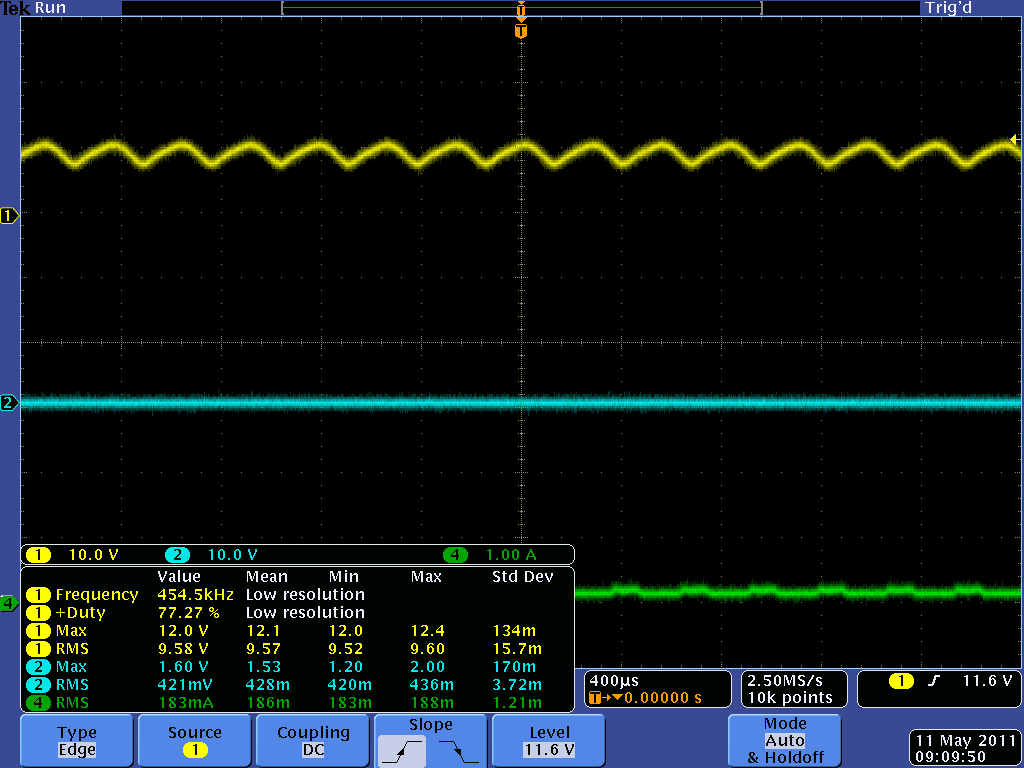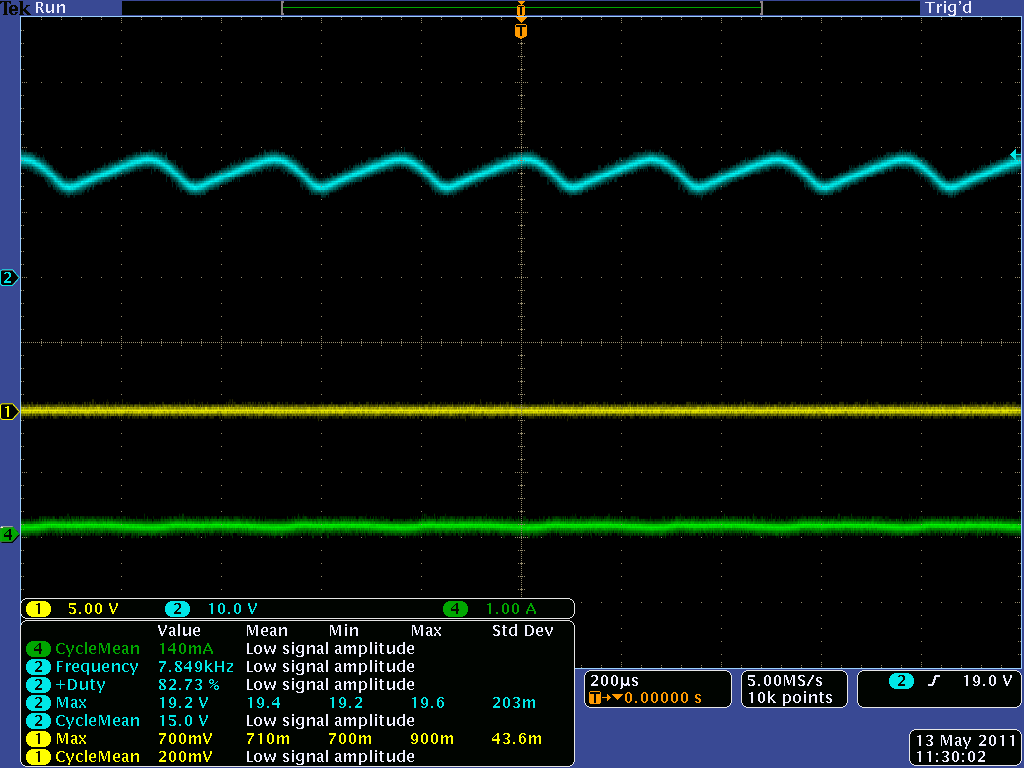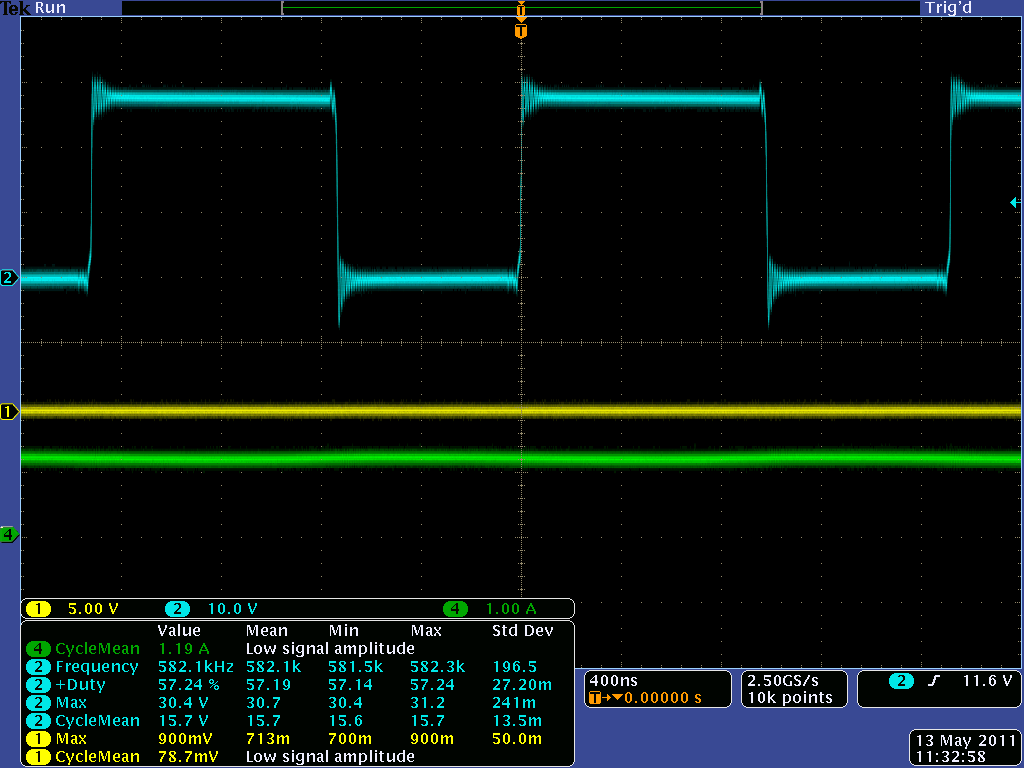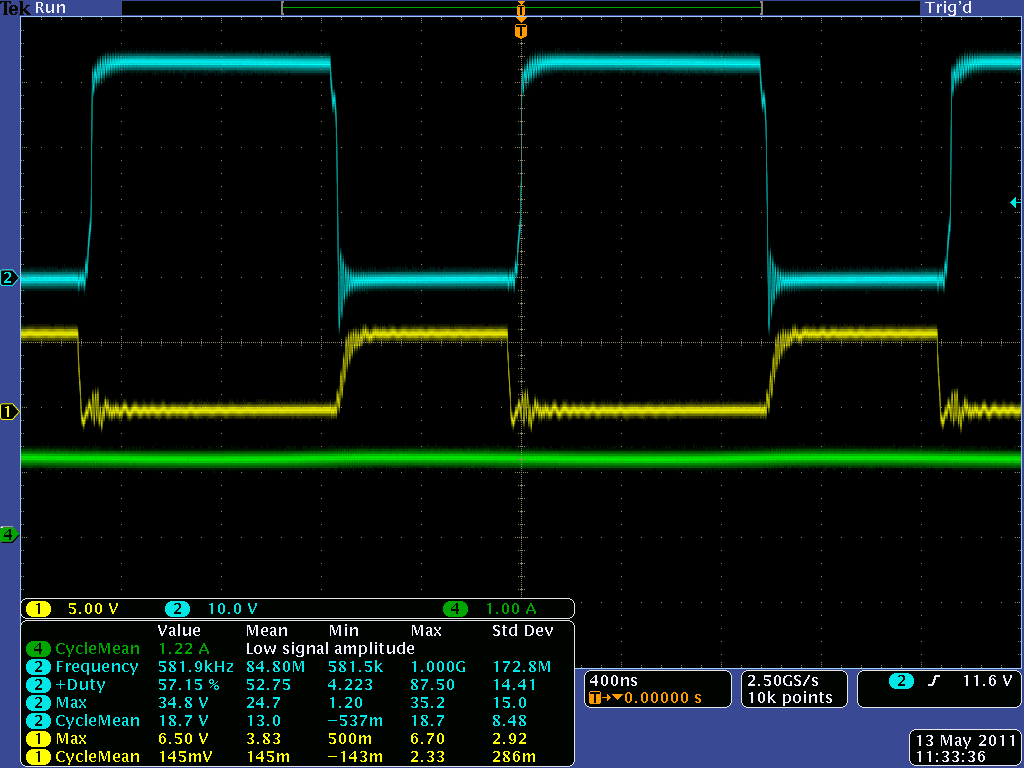Hello,
I was designing a Solar MPPT charger for 12V SLA battery using BQ24650. I was testing using electronic load since I don't have compatible Battery.
When I was doing on 20W, thw noise sound is low. But, when I designed for 50W to charge a 12V SLA battery with max charging current 4A, the noise sound is very loud when the battery voltage is less than 9V, meanings that while charging at precharge current regulaion phase.
It would be very appreciated if someone can share me experience on BQ24650.



 Here I attached the scope images for Vout ripple when I hear the noise, PH node voltage wave form while charging current is about 1 9A and MOSFET gate voltage waveforms while charging with the same current.
Here I attached the scope images for Vout ripple when I hear the noise, PH node voltage wave form while charging current is about 1 9A and MOSFET gate voltage waveforms while charging with the same current.
